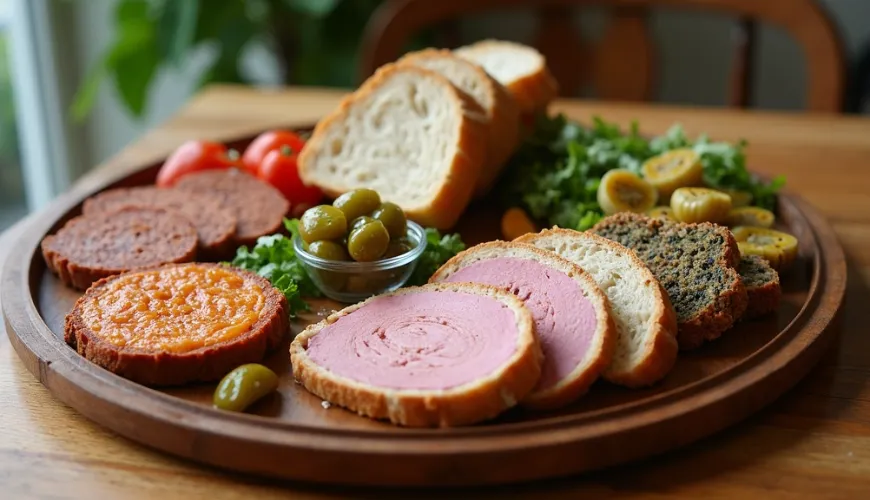
Menu for Type 2 Diabetes - What to Eat and What to Avoid

What Does a Healthy Diet Look Like for Type 2 Diabetes?
Type 2 diabetes is one of the most common chronic diseases of our time. It affects millions of people worldwide, and its prevalence continues to rise, often in connection with an unhealthy lifestyle, overweight, and lack of exercise. One of the key pillars of managing this disease is proper nutrition. A diet for type 2 diabetes can significantly influence not only blood sugar levels but also overall quality of life. What exactly does it mean to eat healthily when you have diabetes? And is it necessary to give up all favorite foods?
The key to success is not a strict diet but the ability to make long-term sustainable changes in eating habits. Suitable foods, regular meals, and the right combinations of nutrients can help stabilize blood glucose levels and reduce the risk of complications.
What Should a Diet for Type 2 Diabetes Include?
The goal of healthy eating is not just to limit sugar—although that is an important aspect—but to improve overall metabolism. The emphasis is primarily on low glycemic index foods, adequate fiber, quality proteins, and healthy fats. A balanced diet for type 2 diabetes also helps maintain a healthy weight, which is often the first step to better disease control.
In practice, this means:
- Regular meal schedule, ideally 4–6 smaller meals per day
- Plenty of vegetables—ideally for lunch and dinner, but also as part of breakfast or snacks
- Whole grains instead of regular white bread
- Legumes, lean meats, and fish as sources of protein
- Healthy fats—for example, from nuts, seeds, avocados, or olive oil
- Limiting sweets, sugary drinks, and processed foods
- Be cautious of hidden sugars and simple carbohydrates in foods where you might not expect them
Does it sound like a lot of restrictions? In reality, it's more about reevaluating priorities and gradually adopting a new approach to eating. For a diet for type 2 diabetes to be sustainable in the long term, it must be tasty and practical.
Real Example - What Does a Diet Look Like in Practice?
Let's imagine Mrs. Jana, a 58-year-old accountant who was diagnosed with type 2 diabetes two years ago. After the initial shock and a few weeks of confusion and searching for information, she accepted the recommendations of a nutrition expert and began changing her approach to eating. Today she says: "The biggest surprise for me was that I don't have to starve to get good results. I just needed to start thinking about what I eat and when I eat it."
Her day starts healthily—with oatmeal with flaxseed, blueberries, and cinnamon, which gives her a good start. In the morning, she has white yogurt with walnuts; for lunch, she chooses roasted chicken thigh without skin with quinoa and broccoli. In the afternoon, she enjoys rye bread with cottage cheese and radishes, and in the evening, she finishes lightly—with vegetable soup and a salad with feta and olive oil.
This diet is varied, filling, and entirely suitable for a person with diabetes. It contains no added sugar, has enough fiber and protein, and most importantly—it is not boring.
What Are the Most Common Misconceptions About Eating with Diabetes?
When searching for the ideal eating regimen, many people fall into the trap of guaranteed advice and internet diets. One common myth is the belief that a person with diabetes should not eat any fruit. In reality, the key is choosing the right type and amount. Berries, apples, or citrus fruits are excellent choices when eaten in moderation and ideally combined with proteins or fats to slow sugar absorption.
Another misconception is the effort to follow a "sugar-free" diet at all costs. Many industrially processed products labeled "sugar-free" contain artificial sweeteners or other unsuitable additives that do not contribute to healthy eating. Similarly, not all "healthy-looking" foods like smoothies, granolas, or vegan bars are automatically suitable for diabetics—they often hide high amounts of carbohydrates.
On the contrary, the key is naturalness and minimal food processing—the fewer ingredients and packaging, the better.
How to Navigate Foods When Shopping?
The ideal shopping cart for a diabetic should mostly contain fresh foods. Vegetables, legumes, whole grain products, quality proteins, and healthy fats form the foundation. When choosing packaged products, it's worth reading the ingredients—added sugars can have various names: glucose syrup, fructose, maltodextrin, sucrose, or corn syrup, for example.
Using the glycemic index as a guideline is very helpful—the lower, the better. For example, white rice has a high glycemic index, while lentils, buckwheat, or sweet potatoes are better alternatives.
According to the recommendations of the National Institute of Public Health, an adult should consume approximately 25–30 grams of fiber daily. This goal can be easily met by consuming whole grains, legumes, vegetables, and fruits—foods that should form the basis of every diet for type 2 diabetes.
How to Deal with Cravings and Emotions?
Eating is not just a biological need—it is closely linked to emotions and habits. For many people, food is a form of reward, comfort, or social interaction. Transitioning to a new way of eating can therefore be psychologically challenging. That's why it's important not to categorically forbid favorite foods but rather look for healthier alternatives. The craving for sweets, for example, doesn't have to be taboo—a small portion of quality dark chocolate with a high cocoa content is a much better choice than a dessert full of sugar and white flour.
Planning also helps in finding balance—a prepared meal plan and shopping list minimize impulsive decisions and help maintain control.
Where to Find Inspiration and Support?
A healthy lifestyle with diabetes is not just about food. Regular exercise, quality sleep, and mental well-being play equally important roles. Many patients find support in communities of people with the same diagnosis, where they can exchange recipes, experiences, and tips. Blogs and books focused on healthy cooking can also be a good source of inspiration, showing that cooking without added sugar and with a reasonable amount of carbohydrates can be tasty, creative, and joyful.
Today, there are also many apps that help track carbohydrate intake, the glycemic index of foods, or blood sugar levels. These can also be useful tools for everyday orientation.
In the end, one thing holds true: a diet for type 2 diabetes is not a punishment, but an opportunity. An opportunity for change that brings more energy, better health, and greater control over one's body. And that's something worth pursuing.

